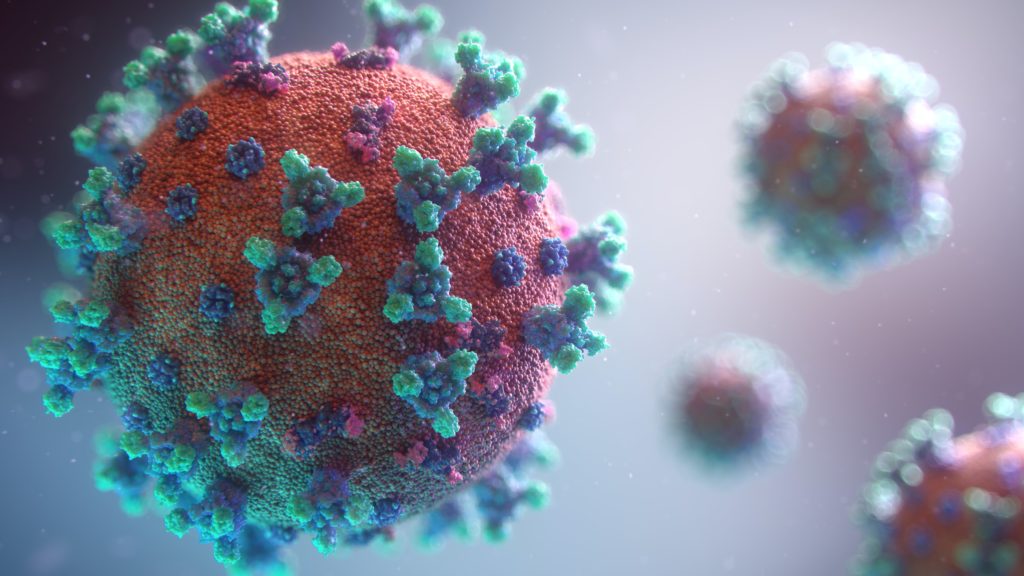We’ve said and believed it since the early days of the pandemic: Once a certain percentage of Americans are immuneto the coronavirus, the pandemic will be behind us. That idea continues to drive many narratives and debates surrounding the COVID-19 public health crisis.
Immunity plays an elemental role when discussing such questions as:
- Should we require masks for vaccinated people or children going back into the classroom?
- Do I bother getting vaccinated if I’ve already gotten and recovered from COVID?
- What good is the vaccine if breakthrough cases are happening?
- Why did the White House suddenly give booster shots the thumbs-up?
These are important conversations, but when conducting them we often overlook how nuanced the concept of virus immunity really is.
As much as we’d like to believe the contrary, our immune systems aren’t so cut-and-dry that a shot in the arm or a previous COVID infection renders us fully protected from the ongoing pandemic. The current SARS-CoV-2 virus (especially the delta variant) continues to infect even vaccinated individuals, and reinfections – though rare – do happen.
To understand the complexities of immunity, we must become familiar with the basic science that drives it.
It starts with the cells
The body’s first line of defense against any invasive entity is its innate immune response, a system every person has at birth. Innate immunity detects common infective agents and blocks or kills harmful materials through different tactics, including our cough reflex, stomach acid, mucus and even skin.
Many infectious agents, however, manage to bypass the innate immune system, but then our adaptive immunity, or acquired immunity, kicks in. This response occurs six to eight days after the body is exposed to antigens, which are toxins, chemicals, viruses, bacteria or other environmental substances.
After an antigen enters the body, white blood cells form and start building adaptive immunity. Some produce antibodies (more on those in a minute), while others actively attack and kill other already infected cells.
The adaptive immune response typically starts between a week after infection or a few weeks after an antigen enters the body via vaccine. But after the process has run its course, a group of white blood cells called memory cells sticks around and puts up a fight the next time the same pathogen shows up.
While evidence suggests memory cells remain responsive six to eight months after infection, counting someone’s white blood cells armed against a certain pathogen is a complicated process. However, we have an easier time tracking another key player in immunity: antibodies.
All about antibodies
You’re probably familiar with the general concept of antibodies, but given their ubiquity in public conversation surrounding COVID, it’s worth a refresher.
Antibodies, as discussed, are produced by certain white blood cells and circulate in your blood, recognizing and neutralizing foreign substances like bacteria and viruses. Basically, they’re your immune system’s way of targeting “invaders.”
Several kinds of antibodies form in response to a pathogen, the first of which are called Immunoglobulin M (IgM) antibodies, followed by the production of Immunoglobulin G (IgG) antibodies. (Again, this process doesn’t occur until days or weeks after initial infection or vaccination, so antibody testing should never replace testing for current COVID infection.)
While IgM antibodies disappear shortly, titers (levels) of IgG antibodies usually remain in the body for months or years. An easy way to remember this distinction is that with IgG antibodies, G stands for “good” — they’re the antibodies that have your back for a long time. You want a robust IgG response after being exposed to COVID-19 or receiving a vaccine.
Ultimately, the more COVID-neutralizing antibodies in your system, the better. They tend to be more prevalent in people who have been naturally and severely infected with COVID-19, and less prevalent in those who experienced mild symptoms or none at all.
But you don’t just achieve full immunity once you hit a certain IgG antibody count — nor does being below a certain threshold mean your immune system has failed. Emory University biostatistician David Benkeser, PhD, put it best: “It’s not like if you have some antibody, but not enough, you’re a sitting duck, and if you hit a magic number your protection hits 100.”
Having a “magic number” to work toward is always ideal compared to a nebulous or ever-changing solution. But personal immunity isn’t that simple, and — contrary to much discourse around the pandemic — neither is herd immunity.
A word on herd immunity
If you (like me) are longing for our country to finally move past the pandemic, odds are at some point you’ve looked up the point at which we’ll reach herd immunity. The answer is not nearly as straightforward as we might have hoped or believed back in spring 2020.
Herd immunity, also referred to as population immunity, occurs when a certain percentage of people achieves immunity to a virus. That percentage depends on a virus’ basic reproductive number (r0), or the number of people to whom the average infected person is expected to transmit the virus.
For example, the r0 of influenza is two, meaning someone who gets the flu can be expected to spread it to two others. The r0 of the measles is extremely high — 19 — leading experts to estimate that 94% of a given population must become immune to eliminate the disease. (Measles was declared officially eliminated from the United States in 2000 thanks to a rigorous vaccination program.)
The original variant of SARS-CoV-2 had an r0 of between two and three, making it slightly more transmissible than the flu. Experts therefore estimated that 60-70% of the population would need to gain immunity — either through exposure or vaccination — to eliminate the virus.
But the delta variant — the dominant strain since early July — is more than twice as transmissible, with an r0 between six and seven. That raises the herd immunity threshold to well over 80%, which would be a difficult goal to reach even with a flawless vaccine.
The problem is that we’re dealing with a so-called “leaky vaccine,” one that — while it helps to build antibodies and greatly reduce hospitalizations — does not ensure full immunity. Before the delta variant became dominant in our nation, COVID-19 vaccines were estimated to be 90% effective at preventing new cases. That figure dipped below 80% by mid-July.
With more contagious variants of the coronavirus surging, poking holes in the vaccine’s efficacy and raising the number of breakthrough cases, true herd immunity becomes a loftier goal by the day. That’s a sobering pill to swallow, especially when the public has accepted herd immunity as a de facto endgame to COVID-19 virtually since the pandemic started.
A full-court press of COVID protection
Don’t misunderstand me: I’m not arguing that the vaccine isn’t worth receiving, or that you’d be better off actively trying to contract COVID to mount a stronger immune response (please don’t do that). Even if you’ve already recovered from the disease, evidence still suggests you’re better off getting vaccinated. I’m also not saying the lack of a “magic number” for IgG antibody count renders antibody tests useless.
But while vaccines, antibody testing and testing for current infection are all important tools in our anti-COVID arsenal, we should not put full faith in any single tactic to carry us through the pandemic. Instead, we should view them as integral parts of an effective pronged solution.
Putting the coronavirus behind us requires a multi-player defense, each member of which plays a crucial role.
This is part one of a three-part blog series on the science, prevention and treatment of COVID-19. Up next: outlining the crucial preventive measures needed to beat COVID-19
Christopher Reeves, MD is chief medical officer of Worksite Labs.




